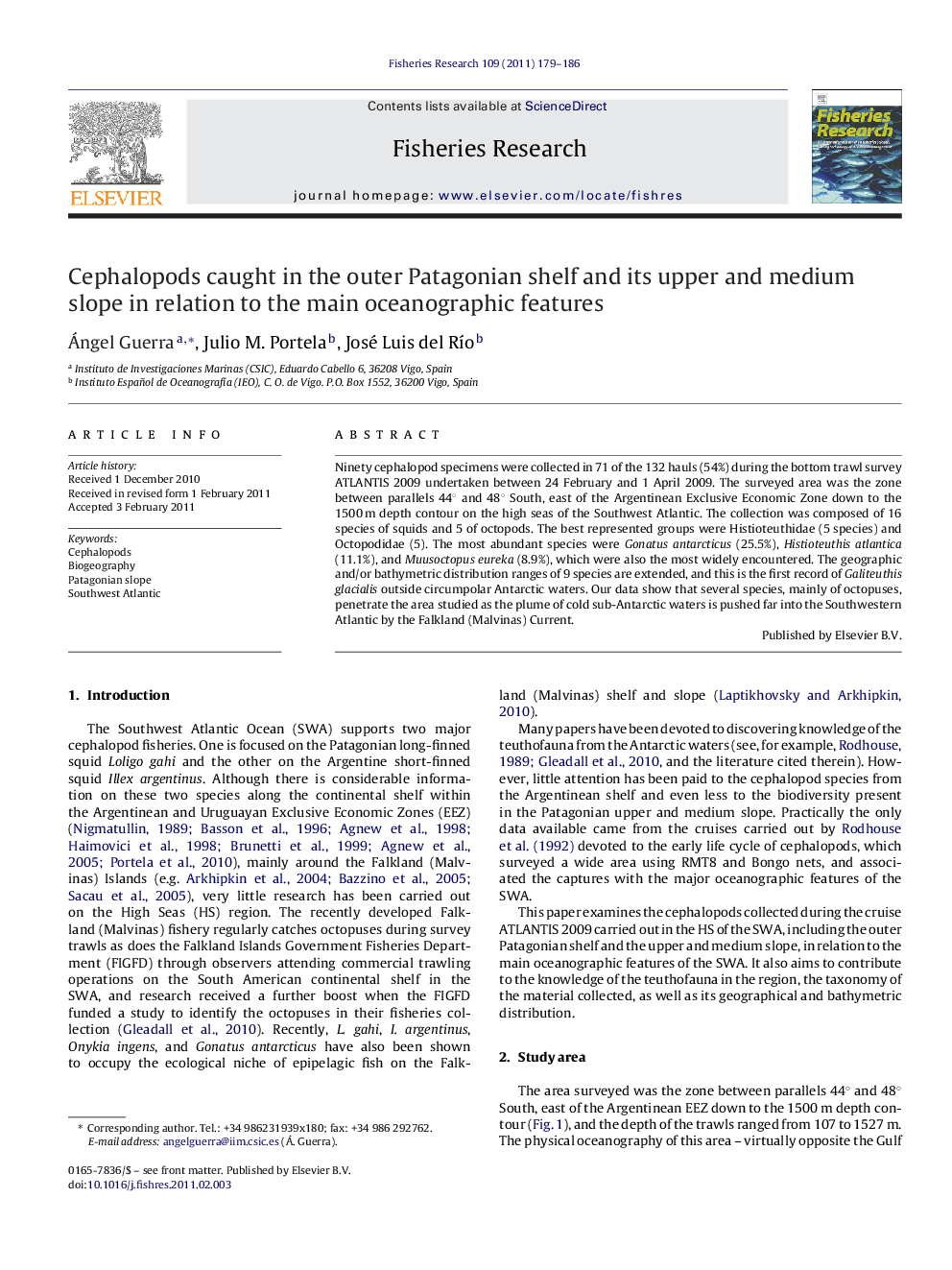| Article ID | Journal | Published Year | Pages | File Type |
|---|---|---|---|---|
| 4543689 | Fisheries Research | 2011 | 8 Pages |
Ninety cephalopod specimens were collected in 71 of the 132 hauls (54%) during the bottom trawl survey ATLANTIS 2009 undertaken between 24 February and 1 April 2009. The surveyed area was the zone between parallels 44° and 48° South, east of the Argentinean Exclusive Economic Zone down to the 1500 m depth contour on the high seas of the Southwest Atlantic. The collection was composed of 16 species of squids and 5 of octopods. The best represented groups were Histioteuthidae (5 species) and Octopodidae (5). The most abundant species were Gonatus antarcticus (25.5%), Histioteuthis atlantica (11.1%), and Muusoctopus eureka (8.9%), which were also the most widely encountered. The geographic and/or bathymetric distribution ranges of 9 species are extended, and this is the first record of Galiteuthis glacialis outside circumpolar Antarctic waters. Our data show that several species, mainly of octopuses, penetrate the area studied as the plume of cold sub-Antarctic waters is pushed far into the Southwestern Atlantic by the Falkland (Malvinas) Current.
Research highlights► Expansion of the geographic and bathymetric distribution of Antarctic cephalopods. ► Deep-sea octopuses, which lineage had their evolutionary origins in the Antarctica, are present in the Patagonian slope. ► The Falkland (Malvinas) current has a strong influence on the biogeography of cephalopod in the South Atlantic. ► New records of cephalopod species in the South Atlantic.
